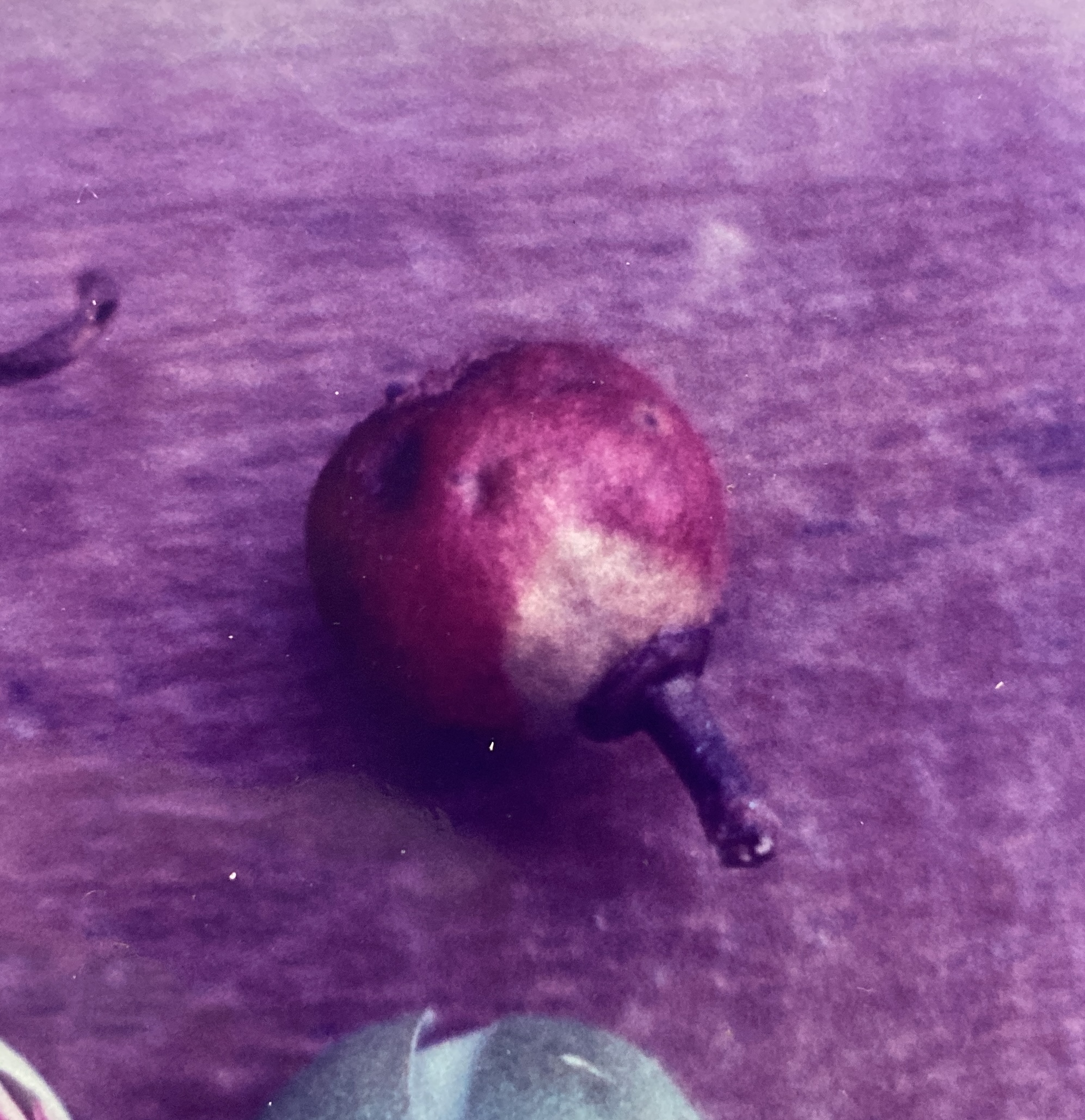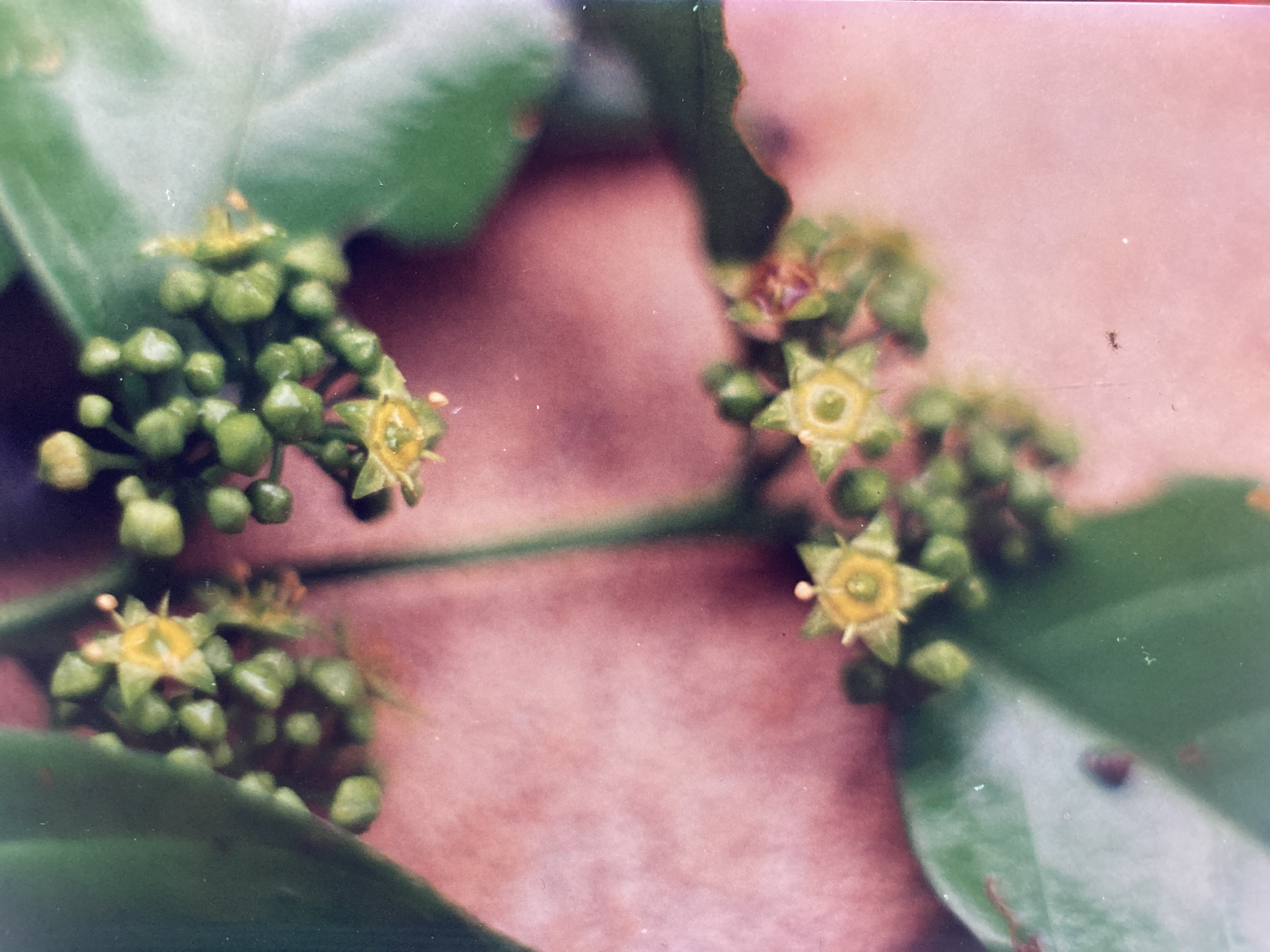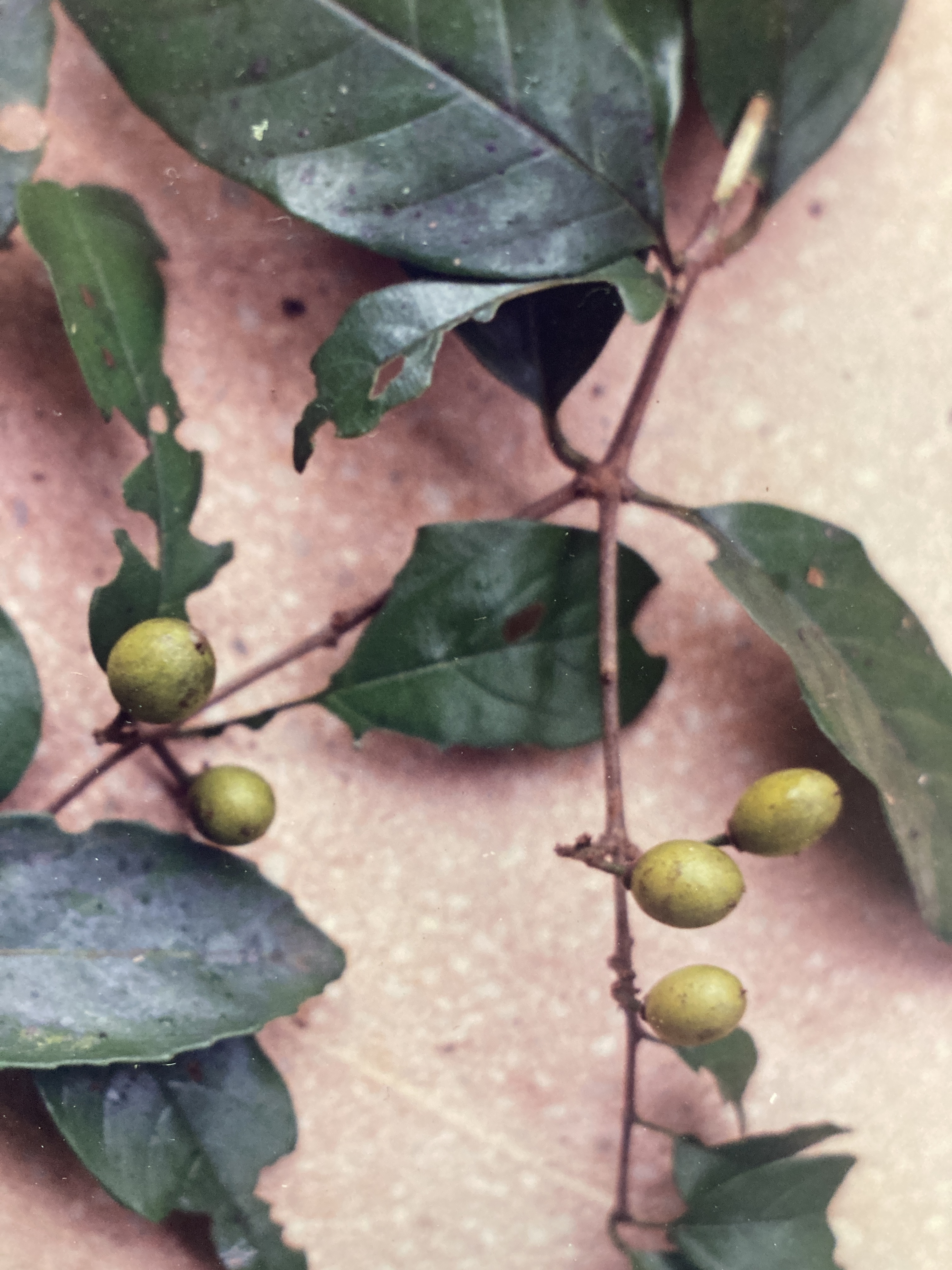Krugiodendron acuminatum Gonz. Ram. L. J. Poveda sp. nov.
Rhamnaceae
Rare evergreen subcanopy tree (15-20 m) of rather unremarkable proportions and features. Krugiodendron is representative of a large, cosmopolitan family of plants (the Rhamnaceae), whose occurrence in Costa Rica is nonetheless limited to a few species. At the time of this writing, Krugiodendron has just been determined to be a new species, and it is known only from Costa Rica and Mexico.
Description: Krugiodendron has a cylindrical, very straight trunk (25 cm) with smooth, dark bark and small, low buttresses. Branches occur along the upper fifth of the bole and they form a narrow, multi-layered crown. Krugiodendron leaves (9 cm by 3 cm) are simple and alternate, however they are so closely spaced along the twig that they often appear to be oppositely arranged. Foliage is positioned in two tiers that flank the branches and that lie within a single, horizontal plane. Krugiodendron leaf blades are narrowly elliptical in shape and they possess short petioles (0.5 cm) and a moderately developed drip tips. Primary and secondary leaf veins are unusually dark in this species and their pinnate arrangement contrasts markedly with the lighter green of the more translucent blades (a unique and identifying feature in an otherwise ordinary tree). Generally, new foliage and twig growth occurs in April – just before flowering – and again in September – just after harvest.
Flowers appear in close, compact, axillary panicles containing 15 or so blossoms each. The angular, pyramidal buds open into unusual and attractive, star-shaped flowers measuring only 0.5 cm across. In each, five green, triangular petals surround a bright-yellow, central disk where five short stamens and a bulb-based pistil are also located. Krugiodendron blossoms emit a strong, sweet and somewhat pungent odor. Trees are fertile annually in May and/or June and remain so for approximately three weeks.
Fruits develop as olive green, nearly spherical drupes that measure one centimeter in diameter. Occurring at the ends of short pedestals, they number only one or two per leaf axil. Each fruit retains a very characteristic, disk-shaped calyx at its base. Upon maturation, the green drupes change color, grading though orange before acquiring a glossy red hue. Under a thin layer of soft flesh, a single, pale, ovoid seed or pit is concealed. Harvest occurs from mid August through September and sometimes (if flowering is late) extends into October. Seeds germinate readily and rapidly in the warm, moist soil so characteristic of the primary forest understory during the rainy season. Small seedlings can be found by late September.

Similar Species: Krugiodendron is most easily recognizable when its distinctly-calyxed, red fruits are in evidence. Otherwise, the narrow, darkly veined leaves aid in accurate identification if care is taken to note their intermediate size and alternate (not opposite) arrangement. Lacmellea panamensis has leaves of similar size and shape, but the foliage of this species is truly of opposite arrangement. Furthermore, Lacmellea possesses an unmistakable thorn-covered trunk.
Natural History: Krugiodendron flowers use their strong odor to attract pollinators (mostly bees), while its fruits are eaten and dispersed by large birds and small arboreal mammals.
Distribution: In Manuel Antonio National Park (MANP), few trees of this species have been found. Krugiodendron tends to be located in the few, undisturbed stands of dark, primary forest that Manuel Antonio still retains. A new species, Krugiodendron is also known from Carara in Costa Rica as well as from Mexico.
Images: Flower Leaf&Fruit Fruit Fruit2


